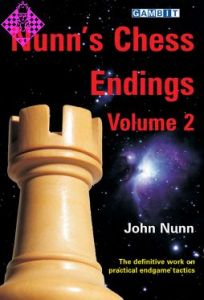Artikelnummer
LXBEIHTPDC
Autor
How to Play Dynamic Chess
176 Seiten, kartoniert, Gambit, 2004
Final vergriffen
Chess is fundamentally a dynamic game. Each move changes the situation and the possibilities for both sides. No piece is ever identically as valuable as any other, and their scope changes from move to move. The current generation of supergrandmasters plays unrelentingly dynamic chess, but a great deal of chess literature still deals with chess as if it were a predominantly static game. Much traditional chess teaching is based around rules of thumb that might work well 'on average' or in 'typical' situations, but these rules may not equip players for the specific and sometimes exceptional situations that they face in their games. In this book, Valeri Beim explains how to factor in dynamic considerations, and weigh initiative and time against material and other static factors.
Introduction:
"This book follows on from my previous work Lessons in Chess Strategy, in which the most imporchapter, supplying the whole work with its central theme, was the one dealing with chess statAccordingly, in the present work it seems logical to concentrate on the other side of the coin: dynamics.
I will now repeat something I said in the previous book (I can't help it, for this is an essential point). The terms statics and dynamics express concepts that are extremely important in chess. They are frequently found in books, articles and annotations. There are definitions of these terms that are generally accepted. And yet I have not so far come across a lucid explanation of the subthat lies behind the definitions, of the way these concepts operate on the chessboard, of the dividing line between them (what it is, and where it must be drawn), and so forth.
Recently, in fact, these extremely important elements of chess have had some books devoted to them. Unfortunately, however, for an ordinary amateur - for someone we normally refer to as a club-player - these books are difficult to follow unaided, precisely because the complex concepts are not elucidated plainly and thoroughly. Such elucidation seems to me essential.
In general, I believe that neither authors nor trainers (and I belong to both those categories myshould forget about the special importance of studying the simplest, most fundamental princiof the game, upon which, after all, everything else in chess is constructed. (I had already written these lines when I came across an utterance by Kasparov in his article on Petrosian: "Essenthe basis for creative achievement in chess is supplied by truths which at first sight appear trivial." I was delighted to find such an authoritative confirmation of my view.)
To chess trainers, my message is this. Should your pupil lack a proper 'grasp' of some simple but important principle of the game, let's say centralization, then both you and he need to identify the problem by studying plenty of examples from his games. For someone who isn't a direct pupil of yours but merely a reader of your books, things are that much harder, for with no one to monitor his chess development, the defects in his play will accumulate.
That, by the way, is precisely the reason for rejecting one opinion which is very popular, indeed almost universal, among chess lovers in the West. According to them, a chess student can do witha trainer entirely (unlike in golf or tennis!), since there's always a computer that 'knows it all better than anyone', and you can buy a book too and on occasion have a look at it. But this view is mistaken. In the first place, a computer may be crammed full of information, but it can never tell what information - in what quantity, in what area, and so forth - is necessary for you personally. And secondly, neither a computer nor the best of books will be able to keep a constant watch on your progress as a chess-player, applying corrective measures as the need arises.
An authoritative and friendly view from someone at their side - this is the main thing that players expect from a good trainer, and it is one of the most indispensable conditions for their development. (This incidentally is a big topic and requires separate discussion.) From all that has been said, it isn't hard to see that for anyone working with chess novices or players trying to improve, the main requirement is a systematic approach and a grasp of the fact that we shouldn't on any account grudge the time spent on 'obvious things' - indeed we should make a detailed and extremely clear explanation of them!
To the students, the very same message can be given: don't try to 'skimp' on the time you devote to these matters. Time spent on the thoughtful study of 'commonplace truths' is always repaid in the form of time saved later and points scored in your games.
Now, a few words on the structure of this book and its content.
It will be entirely devoted to the place of dynamics in the game of chess. I aim to discuss the naof dynamics, how they operate in the most varied situations, and, most importantly, how all this is to be utilized. To my 'regular' readers, I would point out that I have decided to depart somewhat from the usual structure. In particular, there will not be the 'exercises' which have become a regular feature of my books. On the other hand, the quantity of instructional material has been increased, and much of what might have been presented in the form of independent exercises will be found in the examples.
This is my fourth book, and the longer I work on searching for material, the more frequently I come across the problem of sub-standard annotations, whether in periodicals, books or databases. I have often found that these annotations miss the key moments of a game or fail to assess them corI don't wish to point my finger at anyone in particular; indeed if anyone makes the same kind of reproach against my own writings, I am prepared to hear them out, provided of course that they show me exactly where the fault lies.
One other point seems to me of fundamental importance. As always when settling down to work on a new book, I am not content merely to retell things which are fairly common knowledge and which an intelligent and experienced reader can very well look for independently and find scattered in various other books and magazines.
Works composed on such lines, assembling material from various sources and drawing it all todo have their use, which is sometimes very considerable. They can help the reader to attain a more complete grasp of one aspect of chess or another. However, when an author feels it is in his power to add something to what is generally known (he may simply be giving new information, but is often providing an original slant on some familiar aspects of the game), this can give an extra stimulus to his work and make it attractive to the readers. Up to now I have managed to present something 'novel' in each of my books. I intend to do so again this time. I realize of course that not all my disclosures are of equal significance, and that perhaps not all of them will withstand the pasof time. But I think that if some ideas come into your head now and again, they shouldn't be left on the back-burner but published in the expectation of constructive criticism.
The true value of these 'novelties' should emerge when other people - my readers - see them, ponder them and assess them. I am therefore very interested in receiving feedback. That is, I not only address myself to my readers but would also like to hear your opinions on this book as well as on all my previous (and perhaps future) ones. My e-mail address is: valeribeim@gmx.net
Valeri Beim Vienna, 2004"
Introduction:
"This book follows on from my previous work Lessons in Chess Strategy, in which the most imporchapter, supplying the whole work with its central theme, was the one dealing with chess statAccordingly, in the present work it seems logical to concentrate on the other side of the coin: dynamics.
I will now repeat something I said in the previous book (I can't help it, for this is an essential point). The terms statics and dynamics express concepts that are extremely important in chess. They are frequently found in books, articles and annotations. There are definitions of these terms that are generally accepted. And yet I have not so far come across a lucid explanation of the subthat lies behind the definitions, of the way these concepts operate on the chessboard, of the dividing line between them (what it is, and where it must be drawn), and so forth.
Recently, in fact, these extremely important elements of chess have had some books devoted to them. Unfortunately, however, for an ordinary amateur - for someone we normally refer to as a club-player - these books are difficult to follow unaided, precisely because the complex concepts are not elucidated plainly and thoroughly. Such elucidation seems to me essential.
In general, I believe that neither authors nor trainers (and I belong to both those categories myshould forget about the special importance of studying the simplest, most fundamental princiof the game, upon which, after all, everything else in chess is constructed. (I had already written these lines when I came across an utterance by Kasparov in his article on Petrosian: "Essenthe basis for creative achievement in chess is supplied by truths which at first sight appear trivial." I was delighted to find such an authoritative confirmation of my view.)
To chess trainers, my message is this. Should your pupil lack a proper 'grasp' of some simple but important principle of the game, let's say centralization, then both you and he need to identify the problem by studying plenty of examples from his games. For someone who isn't a direct pupil of yours but merely a reader of your books, things are that much harder, for with no one to monitor his chess development, the defects in his play will accumulate.
That, by the way, is precisely the reason for rejecting one opinion which is very popular, indeed almost universal, among chess lovers in the West. According to them, a chess student can do witha trainer entirely (unlike in golf or tennis!), since there's always a computer that 'knows it all better than anyone', and you can buy a book too and on occasion have a look at it. But this view is mistaken. In the first place, a computer may be crammed full of information, but it can never tell what information - in what quantity, in what area, and so forth - is necessary for you personally. And secondly, neither a computer nor the best of books will be able to keep a constant watch on your progress as a chess-player, applying corrective measures as the need arises.
An authoritative and friendly view from someone at their side - this is the main thing that players expect from a good trainer, and it is one of the most indispensable conditions for their development. (This incidentally is a big topic and requires separate discussion.) From all that has been said, it isn't hard to see that for anyone working with chess novices or players trying to improve, the main requirement is a systematic approach and a grasp of the fact that we shouldn't on any account grudge the time spent on 'obvious things' - indeed we should make a detailed and extremely clear explanation of them!
To the students, the very same message can be given: don't try to 'skimp' on the time you devote to these matters. Time spent on the thoughtful study of 'commonplace truths' is always repaid in the form of time saved later and points scored in your games.
Now, a few words on the structure of this book and its content.
It will be entirely devoted to the place of dynamics in the game of chess. I aim to discuss the naof dynamics, how they operate in the most varied situations, and, most importantly, how all this is to be utilized. To my 'regular' readers, I would point out that I have decided to depart somewhat from the usual structure. In particular, there will not be the 'exercises' which have become a regular feature of my books. On the other hand, the quantity of instructional material has been increased, and much of what might have been presented in the form of independent exercises will be found in the examples.
This is my fourth book, and the longer I work on searching for material, the more frequently I come across the problem of sub-standard annotations, whether in periodicals, books or databases. I have often found that these annotations miss the key moments of a game or fail to assess them corI don't wish to point my finger at anyone in particular; indeed if anyone makes the same kind of reproach against my own writings, I am prepared to hear them out, provided of course that they show me exactly where the fault lies.
One other point seems to me of fundamental importance. As always when settling down to work on a new book, I am not content merely to retell things which are fairly common knowledge and which an intelligent and experienced reader can very well look for independently and find scattered in various other books and magazines.
Works composed on such lines, assembling material from various sources and drawing it all todo have their use, which is sometimes very considerable. They can help the reader to attain a more complete grasp of one aspect of chess or another. However, when an author feels it is in his power to add something to what is generally known (he may simply be giving new information, but is often providing an original slant on some familiar aspects of the game), this can give an extra stimulus to his work and make it attractive to the readers. Up to now I have managed to present something 'novel' in each of my books. I intend to do so again this time. I realize of course that not all my disclosures are of equal significance, and that perhaps not all of them will withstand the pasof time. But I think that if some ideas come into your head now and again, they shouldn't be left on the back-burner but published in the expectation of constructive criticism.
The true value of these 'novelties' should emerge when other people - my readers - see them, ponder them and assess them. I am therefore very interested in receiving feedback. That is, I not only address myself to my readers but would also like to hear your opinions on this book as well as on all my previous (and perhaps future) ones. My e-mail address is: valeribeim@gmx.net
Valeri Beim Vienna, 2004"
| EAN | 9781904600152 |
|---|---|
| Gewicht | 325 g |
| Hersteller | Gambit |
| Breite | 17,2 cm |
| Höhe | 24,7 cm |
| Medium | Buch |
| Erscheinungsjahr | 2004 |
| Autor | Valeri Beim |
| Sprache | Englisch |
| ISBN-10 | 1904600158 |
| ISBN-13 | 9781904600152 |
| Seiten | 176 |
| Einband | kartoniert |
004 Symbols
005 Introduction
007 Dynamics
042 Development
097 King Moves for Attacking Purposes
114 Breakthrough
131 Initiative
174 Index of Players
176 Index of Openings
005 Introduction
007 Dynamics
042 Development
097 King Moves for Attacking Purposes
114 Breakthrough
131 Initiative
174 Index of Players
176 Index of Openings
This is a follow up to the author's previous book, Lessons in Chess Strategy. That book dealt essentially with static features on the chess board, mainly pawn structures, whereas the present volume deals with dynamic features. By dynamics he means those aspects of the game that are constantly changing, and this relates mainly, but not exclusively, to piece play.
The book consists of five chapters, whose headings are self-explanatory. Chapter One, Dynamics, attempts to explain and illustrate the meaning of the term
"dynamics". Chapter Two, Development, looks at the importance of getting the pieces into play as quickly as possible. The emphasis here is on quality as much as quantity, which basically means making sure that the pieces are not only developed, but are developed to the optimum square. Chapter Three, King Moves for Attacking Purposes, needs no explanation. Chapter Four, Breakthrough, is mainly about using pawns as a battering ram to break open the opponent's defensive position. Finally, Chapter Five, Initiative, examines the importance of time and speed in positions where one side has the initiative and seeks to push home the advantage that this confers.
The ideas in each chapter are illustrated by a series of well-chosen examples, both part and full games, with annotations that explain clearly the motivation behind the moves. Practice makes perfect, so they say. This is true not only of chess, but apparently of chess authorship too. For this is, for me, by far the best of Valeri Beim's four books. He has a clear notion of what he wants to say and he communicates his ideas succinctly to the reader. It is not a book for beginners, but contains a good many useful ideas which can be readily understood and digested by ambitious and aspiring club players.
Alan Sutton, "En Passant"
The book consists of five chapters, whose headings are self-explanatory. Chapter One, Dynamics, attempts to explain and illustrate the meaning of the term
"dynamics". Chapter Two, Development, looks at the importance of getting the pieces into play as quickly as possible. The emphasis here is on quality as much as quantity, which basically means making sure that the pieces are not only developed, but are developed to the optimum square. Chapter Three, King Moves for Attacking Purposes, needs no explanation. Chapter Four, Breakthrough, is mainly about using pawns as a battering ram to break open the opponent's defensive position. Finally, Chapter Five, Initiative, examines the importance of time and speed in positions where one side has the initiative and seeks to push home the advantage that this confers.
The ideas in each chapter are illustrated by a series of well-chosen examples, both part and full games, with annotations that explain clearly the motivation behind the moves. Practice makes perfect, so they say. This is true not only of chess, but apparently of chess authorship too. For this is, for me, by far the best of Valeri Beim's four books. He has a clear notion of what he wants to say and he communicates his ideas succinctly to the reader. It is not a book for beginners, but contains a good many useful ideas which can be readily understood and digested by ambitious and aspiring club players.
Alan Sutton, "En Passant"
Der aus Odessa stammende GM Valeri Beim lebt heute in Wien und besitzt reiche Erfahrungen als Turnierspieler, Trainer und Schach-Autor. In seinem neuesten Werk „Wie man dynamisches Schach spielt" zeigt er die dynamischen Elemente der Spielführung auf und stellt sie den statischen Faktoren gegenüber... Als oberstes Prinzip gilt dem Verfasser jedoch nicht die Balance von Statik und Dynamik sondern das harmonische Zusammenspiel der Figuren. Der Verfasser hält Morphy, Aljechin, Tal und Kasparow als die größten Protagonisten des dynamischen Spiels und folgerichtig bringt er nicht weniger als 27 Partien aus deren Schaffen (von insgesamt 85 kommentierten und analysierten Beispielpartien) zur Illustration der verschiedenen Themen. Diese sind im Einzelnen:
1) „Dynamismen": Der Ausdruck steht für die mobilen Fähigkeiten der Figuren - im Gegensatz zu den statischen Elementen wie Bauernstruktur, Materialverteilung u. a. m.
Dynamische Vorteile müssen sofort ausgenützt werden, jede Verzögerung kann sich als kontraproduktiv herausstellen. Opfer sind nicht selten anzutreffen (S. 7-41, mit 15 Beispielen vornehmlich von Tal, Stein und Kasparow).
2) „Entwicklung": Ein Entwicklungsvorsprung ergibt sich bei einem signifikanten Übergewicht an Kräften in dem Bereich des Schachbretts, wo die entscheidenden Aktionen stattfinden (S. 42-96, mit 29 Partien, wobei oftmals zwei Bespiele mit eng verwandter Thematik hintereinandergeschaltet sind).
3) „Königszüge für Angriffszwecke": Ein kurzes Kapitel über die eher seltenen Fälle, wo der König des Angreifers durch elegante Sidesteps Platz schafft für die aggressive Postierung der eigenen Figuren (S. 97-113, mit 10 Beispielen).
4) „Durchbruch": Meistens handelt es sich um überraschende zentrale Bauernvorstöße, aber auch Qualitäts- und Figurenopfer eignen sich gut, um den Weg in das Herz der gegnerischen Stellung freizukämpfen (S. 114-130, mit 10 Beispielen).
5) „Initiative": Nach Definition des Autors der Umstand, dass ein Spielpartner Drohungen schneller aufstellen kann als sein Gegner, welcher dann zum Reagieren gezwungen wird. Bei lascher Fortsetzung kann die Initiative an den Kontrahenten übergehen, was nicht nur für den weiteren Spielverlauf, sondern auch in psychologischer Hinsicht einen gravierenden Nachteil bedeuten kann (S. 131-173, mit 21 Partien).
Valeri Beim hat als versierter Autor die (durchweg aus dem Bereich des Spitzenschachs stammenden) Beispielpartien mit Bedacht ausgewählt und ziemlich erschöpfend analysiert, um die wesentlichen Charakteristika des dynamischen Spiels klar herauszuarbeiten. Schach-Amateure jeglicher Spielstärke können demnach von diesem Buch eine Menge profitieren, wenn sie der englischen Sprache kundig sind. Abschließend eine Glanzpartie, entnommen aus dem zweiten Kapitel:
Botwinnik - Portisch, Monte Carlo 1968 (S. 46 ff, dort mit ausführlichen Anmerkungen und Analysen):
1.c4 e5 2.Sc3 Sf6 3.g3 d5 4.c:d5 S:d5 5.Lg2 Le6 6. Sf3 Sc6 7.0-0 Sb6 8. d3 Se7 9.a3 a5?! 10.Le3 0-0 11.Sa4 S:a4?! 12.D:e4 Ld5 13.Tfc1 Te8 14.Tc2 Lf8 15.Tac1 Sb8? 16.T:c7! Lc6 17.T1:c6! b:c6 18.T:f7! h6 19.Tb7 Dc8 20.Dc4+! Kh8 21.Sh4!! Db7: 22.Sf6+ Kh7 23.Le4 Ld6 24.S:e5+ g6 25.L:g6+ Kg7 26.L:h6+! 1:0.
Von dem damals 57-jährigen Exweltmeister im Sturm-und-Drangstil der Jugend vorgetragen.
Dr. W. Schweizer - Rochade Europa Nr. 10 Oktober 2004
______________________________
„Schon wieder jemand, der uns etwas über Dynamik erzählen will!" war die implusive Reaktion meines Mannschaftskameraden Josef Roth, als er mir das Buch bei meiner Berliner Stippvisite übergab. Er fügte aber daraufhin ehrfurchtsvoll hinzu „Das ist ein Guter der Beim!" Mir ging es bei der Rezension von Beims Erstlingswerkes „Chessrecipe from from the Grandmasters Kitchen" ähnlich, die anfängliche Skepsis wich aufgrund der guten Qualität sehr schnell. Mit dem vorliegenden Werk hat der aus Odessa stammende 46-Jährige nun sein insgesamt viertes Buch geschrieben. Es ist sicherlich kein Zufall, dass Beims Bücher (Understanding the Leningrad, Lessons in Strategy und das o.g. Werk) allesamt gute Kritiken bekamen.
Der in Wien lebende Russe hat sich in Österreich einen guten Namen als Trainer erarbeitet und man merkt seinen Büchern - ähnlich wie bei Trainerguru Dworetzki - den m. E. sehr wichtigen Praxisbezug an. Dieser Mann weiß einfach zu überzeugen, wer ihn mal bei seinem Training erlebt hat, weiß wovon ich spreche. Michael Ehn, der die Wochenendschachseite des Standards hervorragend redigiert, beschreibt seine Vororteindrücke in für einen Österreicher sehr euphorischer Art: „...selten haben wir - Michael Ehn, Wiener Meister, sonst eher unbeugsam selbstbewusst - so konzentriert lauschen gesehen. Wenn Beims Hände über das Brett huschen, erhält man eine vage Idee von der dichten, fruchtbringenden Atmosphäre im Pionierpalast in Odessa, als der junge Meister Beim gemeinsam mit Efim Geller die Kurse von Kotlerman und Kogan besuchte. Diese Atmosphäre überträgt sich; der Funke springt über in den Wiener Vorträgen wie in den Büchern des Großmeisters, der zu den besten Trainern der Welt zählt. Was lernt man bei Beim? Vor allem das Verständnis för das „dynamische Schach" und das Wechselspiel von Statik und Dynamik zu entwickeln, sozusagen für die kinetische Energie, die in den Figuren und Bauern schlummert." Schöner hätte ich das auch nicht ausdrücken können, und was Herr Ehn so lyrisch beschreibt, entspricht der Wahrheit. Wie auch in seinem Lessons in Chess Strategy liest man daher weniger von den ewigen „Schachwahrheiten", vielmehr lernt man sehr praxisorientiert jene Momente zu erkennen und damit umzugehen, an denen sich das Bewegungsmaterial der Figuren „blitzlichtartig" entlädt. Und wie lehrt Beim das?
Das vorliegende Werk hat er in folgende 5 Kapitel aufgeteilt:
- Dynamismen
- Entwicklung
- Königszüge für Angriffszwecke (in dem Beim Kasparow als wahren Champion ausmacht)
- Durchbruch
- dem schwer zu beschreibenden Bereich der „Initiative"
Diese fünf Themen hat Beim zielgenau ausgesucht, fotografiert er hiermit m. E. die wichtigsten Elemente des „dynamischen Spiels". Einer der großen Stärken diese Buches ist sicherlich Beims unermüdliche Analysearbeit - die er dem Leser als Hauptquelle der eigenen Spielstärkeverbesserung nahe zubringen versucht - er erläutert diese Themenbereiche mit vielen bekannten aber auch unbekannten Beispielpartien bzw. Partiefragmenten.
Fazit: Ein unbedingtes Muss für den ambitionierten Clubspieler im Spielstärkebereich von 1900-2300, der sich mit dem intensiven Studium dieses Werkes das beste Weihnachtsgeschenk machen könnte.
Beims brilliante Analyse fasste der ehemalige NIC-Buchrezensent GM Matthew Sadler (seit neusten führt sein Nachfolger GM Jon Rowson einen bemerkenswerten eigenen Stil in die klassische Buchrezension ein, von daher lohnt sich der Kauf von der neusten NIC-Ausgabe 3/2004) korrekt in nur drei Worten zusammen: Aaaah! Great Stuff!" oder wie es eben mein Elo-schwächerer Freund bescheidener ausdrückte: „Das ist ein Guter der Beim..."
FM Jürgen Brustkern; Rochade Europa 12/2004
-----------------------------------------------
Von Valeri Beim haben wir Ihnen im Schach Markt Nr. 1/ 2004 bereits 'Lessons in Chess Strategy' vorgedas ebenfalls beim Verlag Gambit erschienen ist. Das nun vor'How to Play Dynamic Chess' bezeichnet der Autor als logiErgänzung. Während er in dem erstgenannten Buch den statischen Merkmalen einer Stellung mehr Aufgewidmet hat, rückt nun die Dynamik in den Mittelpunkt. Natürlich kann man trotz dieses Zudie Bücher unabhängig voneinander lesen.
Der Stoff ist in fünf Abschnitte gegliedert: Dynamik, Entwicklung, Königszüge zu Angriffszwecken, Durchbruch und Initiative. Das Buch enthält über 60 vollständige Partien, dazu zahlreiche Partiestellungen. Bei der Auswahl hat der Autor die Spieler der absoluten Weltklasse bevorzugt. Meistens handelt es sich um Partien neueren Datums, gelegentlich tauchen aber auch Partien aus der Vergangenauf.
Insgesamt handelt es sich bei dieWerk um ein sehr gutes Lehrdes Schachspiels, das wir allen fortgeschrittenen Schachfreunden empfehlen können. Englische Sprachsollten vorhanden sein.
Schachmarkt 02/2005
1) „Dynamismen": Der Ausdruck steht für die mobilen Fähigkeiten der Figuren - im Gegensatz zu den statischen Elementen wie Bauernstruktur, Materialverteilung u. a. m.
Dynamische Vorteile müssen sofort ausgenützt werden, jede Verzögerung kann sich als kontraproduktiv herausstellen. Opfer sind nicht selten anzutreffen (S. 7-41, mit 15 Beispielen vornehmlich von Tal, Stein und Kasparow).
2) „Entwicklung": Ein Entwicklungsvorsprung ergibt sich bei einem signifikanten Übergewicht an Kräften in dem Bereich des Schachbretts, wo die entscheidenden Aktionen stattfinden (S. 42-96, mit 29 Partien, wobei oftmals zwei Bespiele mit eng verwandter Thematik hintereinandergeschaltet sind).
3) „Königszüge für Angriffszwecke": Ein kurzes Kapitel über die eher seltenen Fälle, wo der König des Angreifers durch elegante Sidesteps Platz schafft für die aggressive Postierung der eigenen Figuren (S. 97-113, mit 10 Beispielen).
4) „Durchbruch": Meistens handelt es sich um überraschende zentrale Bauernvorstöße, aber auch Qualitäts- und Figurenopfer eignen sich gut, um den Weg in das Herz der gegnerischen Stellung freizukämpfen (S. 114-130, mit 10 Beispielen).
5) „Initiative": Nach Definition des Autors der Umstand, dass ein Spielpartner Drohungen schneller aufstellen kann als sein Gegner, welcher dann zum Reagieren gezwungen wird. Bei lascher Fortsetzung kann die Initiative an den Kontrahenten übergehen, was nicht nur für den weiteren Spielverlauf, sondern auch in psychologischer Hinsicht einen gravierenden Nachteil bedeuten kann (S. 131-173, mit 21 Partien).
Valeri Beim hat als versierter Autor die (durchweg aus dem Bereich des Spitzenschachs stammenden) Beispielpartien mit Bedacht ausgewählt und ziemlich erschöpfend analysiert, um die wesentlichen Charakteristika des dynamischen Spiels klar herauszuarbeiten. Schach-Amateure jeglicher Spielstärke können demnach von diesem Buch eine Menge profitieren, wenn sie der englischen Sprache kundig sind. Abschließend eine Glanzpartie, entnommen aus dem zweiten Kapitel:
Botwinnik - Portisch, Monte Carlo 1968 (S. 46 ff, dort mit ausführlichen Anmerkungen und Analysen):
1.c4 e5 2.Sc3 Sf6 3.g3 d5 4.c:d5 S:d5 5.Lg2 Le6 6. Sf3 Sc6 7.0-0 Sb6 8. d3 Se7 9.a3 a5?! 10.Le3 0-0 11.Sa4 S:a4?! 12.D:e4 Ld5 13.Tfc1 Te8 14.Tc2 Lf8 15.Tac1 Sb8? 16.T:c7! Lc6 17.T1:c6! b:c6 18.T:f7! h6 19.Tb7 Dc8 20.Dc4+! Kh8 21.Sh4!! Db7: 22.Sf6+ Kh7 23.Le4 Ld6 24.S:e5+ g6 25.L:g6+ Kg7 26.L:h6+! 1:0.
Von dem damals 57-jährigen Exweltmeister im Sturm-und-Drangstil der Jugend vorgetragen.
Dr. W. Schweizer - Rochade Europa Nr. 10 Oktober 2004
______________________________
„Schon wieder jemand, der uns etwas über Dynamik erzählen will!" war die implusive Reaktion meines Mannschaftskameraden Josef Roth, als er mir das Buch bei meiner Berliner Stippvisite übergab. Er fügte aber daraufhin ehrfurchtsvoll hinzu „Das ist ein Guter der Beim!" Mir ging es bei der Rezension von Beims Erstlingswerkes „Chessrecipe from from the Grandmasters Kitchen" ähnlich, die anfängliche Skepsis wich aufgrund der guten Qualität sehr schnell. Mit dem vorliegenden Werk hat der aus Odessa stammende 46-Jährige nun sein insgesamt viertes Buch geschrieben. Es ist sicherlich kein Zufall, dass Beims Bücher (Understanding the Leningrad, Lessons in Strategy und das o.g. Werk) allesamt gute Kritiken bekamen.
Der in Wien lebende Russe hat sich in Österreich einen guten Namen als Trainer erarbeitet und man merkt seinen Büchern - ähnlich wie bei Trainerguru Dworetzki - den m. E. sehr wichtigen Praxisbezug an. Dieser Mann weiß einfach zu überzeugen, wer ihn mal bei seinem Training erlebt hat, weiß wovon ich spreche. Michael Ehn, der die Wochenendschachseite des Standards hervorragend redigiert, beschreibt seine Vororteindrücke in für einen Österreicher sehr euphorischer Art: „...selten haben wir - Michael Ehn, Wiener Meister, sonst eher unbeugsam selbstbewusst - so konzentriert lauschen gesehen. Wenn Beims Hände über das Brett huschen, erhält man eine vage Idee von der dichten, fruchtbringenden Atmosphäre im Pionierpalast in Odessa, als der junge Meister Beim gemeinsam mit Efim Geller die Kurse von Kotlerman und Kogan besuchte. Diese Atmosphäre überträgt sich; der Funke springt über in den Wiener Vorträgen wie in den Büchern des Großmeisters, der zu den besten Trainern der Welt zählt. Was lernt man bei Beim? Vor allem das Verständnis för das „dynamische Schach" und das Wechselspiel von Statik und Dynamik zu entwickeln, sozusagen für die kinetische Energie, die in den Figuren und Bauern schlummert." Schöner hätte ich das auch nicht ausdrücken können, und was Herr Ehn so lyrisch beschreibt, entspricht der Wahrheit. Wie auch in seinem Lessons in Chess Strategy liest man daher weniger von den ewigen „Schachwahrheiten", vielmehr lernt man sehr praxisorientiert jene Momente zu erkennen und damit umzugehen, an denen sich das Bewegungsmaterial der Figuren „blitzlichtartig" entlädt. Und wie lehrt Beim das?
Das vorliegende Werk hat er in folgende 5 Kapitel aufgeteilt:
- Dynamismen
- Entwicklung
- Königszüge für Angriffszwecke (in dem Beim Kasparow als wahren Champion ausmacht)
- Durchbruch
- dem schwer zu beschreibenden Bereich der „Initiative"
Diese fünf Themen hat Beim zielgenau ausgesucht, fotografiert er hiermit m. E. die wichtigsten Elemente des „dynamischen Spiels". Einer der großen Stärken diese Buches ist sicherlich Beims unermüdliche Analysearbeit - die er dem Leser als Hauptquelle der eigenen Spielstärkeverbesserung nahe zubringen versucht - er erläutert diese Themenbereiche mit vielen bekannten aber auch unbekannten Beispielpartien bzw. Partiefragmenten.
Fazit: Ein unbedingtes Muss für den ambitionierten Clubspieler im Spielstärkebereich von 1900-2300, der sich mit dem intensiven Studium dieses Werkes das beste Weihnachtsgeschenk machen könnte.
Beims brilliante Analyse fasste der ehemalige NIC-Buchrezensent GM Matthew Sadler (seit neusten führt sein Nachfolger GM Jon Rowson einen bemerkenswerten eigenen Stil in die klassische Buchrezension ein, von daher lohnt sich der Kauf von der neusten NIC-Ausgabe 3/2004) korrekt in nur drei Worten zusammen: Aaaah! Great Stuff!" oder wie es eben mein Elo-schwächerer Freund bescheidener ausdrückte: „Das ist ein Guter der Beim..."
FM Jürgen Brustkern; Rochade Europa 12/2004
-----------------------------------------------
Von Valeri Beim haben wir Ihnen im Schach Markt Nr. 1/ 2004 bereits 'Lessons in Chess Strategy' vorgedas ebenfalls beim Verlag Gambit erschienen ist. Das nun vor'How to Play Dynamic Chess' bezeichnet der Autor als logiErgänzung. Während er in dem erstgenannten Buch den statischen Merkmalen einer Stellung mehr Aufgewidmet hat, rückt nun die Dynamik in den Mittelpunkt. Natürlich kann man trotz dieses Zudie Bücher unabhängig voneinander lesen.
Der Stoff ist in fünf Abschnitte gegliedert: Dynamik, Entwicklung, Königszüge zu Angriffszwecken, Durchbruch und Initiative. Das Buch enthält über 60 vollständige Partien, dazu zahlreiche Partiestellungen. Bei der Auswahl hat der Autor die Spieler der absoluten Weltklasse bevorzugt. Meistens handelt es sich um Partien neueren Datums, gelegentlich tauchen aber auch Partien aus der Vergangenauf.
Insgesamt handelt es sich bei dieWerk um ein sehr gutes Lehrdes Schachspiels, das wir allen fortgeschrittenen Schachfreunden empfehlen können. Englische Sprachsollten vorhanden sein.
Schachmarkt 02/2005
Mehr von Gambit
-
 Nunn's Chess Endings - Vol. 221,50 €
Nunn's Chess Endings - Vol. 221,50 € -
 Geheimnisse der Schachintuition12,95 €
Geheimnisse der Schachintuition12,95 € -
 Schnell Gewinnen im Schach22,50 €
Schnell Gewinnen im Schach22,50 € -
 Understanding the Scandinavian19,95 €
Understanding the Scandinavian19,95 € - Mehr von Gambit




